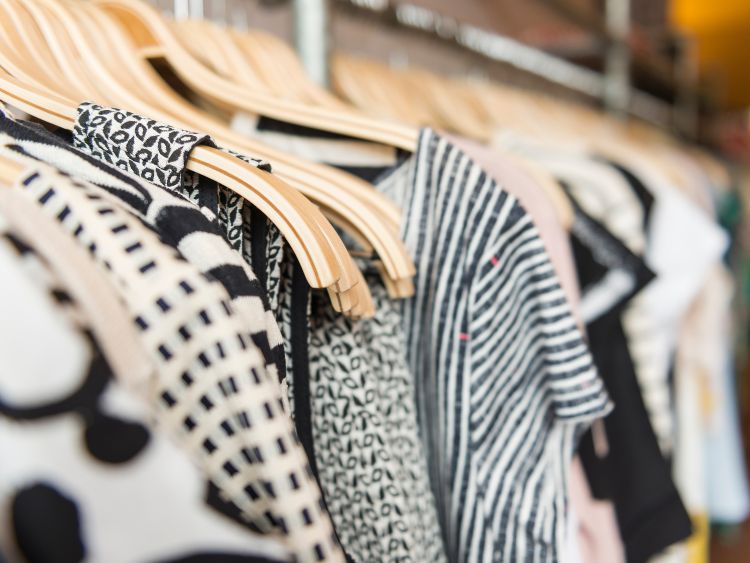The 1930s was an era defined by elegance, innovation, and resilience. Despite the hardships of the Great Depression, fashion in the ’30s managed to retain an air of sophistication. Hollywood glamour became a significant influence, driving trends that are still admired today. From flowing bias-cut dresses to sharply tailored suits, 1930s fashion was all about embracing femininity and sophistication, while menswear embraced refinement with a modern edge.
The Influence of Hollywood on 1930s Fashion
Hollywood’s Golden Age played a major role in setting fashion trends during this era. Movie stars like Greta Garbo, Katharine Hepburn, and Clark Gable became style icons, inspiring fashion lovers worldwide. Their on-screen wardrobes sparked new trends, and the public eagerly followed suit, adopting the glamorous silhouettes and luxurious fabrics displayed in films.
Women’s Fashion in the 1930s: Embracing Femininity
- Bias-Cut Dresses: One of the hallmark innovations of 1930s fashion was the bias cut, popularized by designers like Madeleine Vionnet. This technique allowed fabrics to cling elegantly to the body, creating a fluid silhouette that moved with the wearer. These dresses were perfect for eveningwear, giving women a glamorous, statuesque appearance.
- Flowing Fabrics: Lightweight, flowing fabrics like silk and satin were widely used. The goal was to create dresses that were not only beautiful but also comfortable. Women’s clothing became less structured compared to the previous decade, signaling a shift toward a more relaxed yet elegant style.
- Waistline Revival: In contrast to the drop-waist styles of the 1920s, the ’30s saw the return of the natural waistline. Dresses now featured nipped-in waists, accentuating the female figure while maintaining modesty and grace.
Men’s Fashion in the 1930s: Refinement and Structure
- Double-Breasted Suits: Menswear in the 1930s was characterized by sharp, tailored suits. The double-breasted suit, often in darker tones like navy or gray, became a staple for men seeking to convey professionalism and power.
- Wide-Lapel Jackets: Jackets with wide lapels and padded shoulders emphasized the masculine silhouette, giving men a broader, more imposing appearance.
- The Fedora Hat: No 1930s men’s ensemble was complete without a stylish hat, and the fedora was the headwear of choice. The brimmed hat added an element of class and was often paired with a matching overcoat in cooler months.
1930s Accessories: The Final Touch
- Women’s Hats and Gloves: Women often completed their outfits with accessories like wide-brimmed hats, turbans, and gloves. Gloves were worn as a symbol of refinement and were essential for formal occasions. Hats varied in style, with cloches and pillbox shapes being particularly popular.
- Art Deco Jewelry: Jewelry in the 1930s featured geometric shapes and bold designs influenced by the Art Deco movement. Long strands of pearls, brooches, and delicate bracelets were worn to add elegance to eveningwear.
1930s Fashion in Everyday Life
Despite the luxurious styles seen in Hollywood films, most people were dealing with the financial difficulties of the Great Depression. As a result, everyday fashion took a more practical turn. Women often sewed their own dresses using affordable fabrics like cotton. Hemlines also dropped to mid-calf for daywear, with floral prints and simple designs dominating wardrobes.
For men, workwear included durable fabrics such as tweed and wool. Overalls and sturdy boots were common for laborers, while men working in offices continued to wear suits, though perhaps not as extravagant as those seen on the silver screen.
How the Great Depression Shaped 1930s Fashion
While 1930s fashion was defined by its glamour and elegance, the economic reality of the time couldn’t be ignored. The Great Depression led to a more practical approach to fashion, as people were forced to find ways to make clothing last longer. Upcycling old garments, reusing fabric, and making homemade clothes became common practices. Despite these challenges, fashion remained an important aspect of society, offering a sense of normalcy and escape during difficult times.
FAQs About 1930s Fashion
What were the most popular fabrics used in 1930s fashion? Silk, satin, and velvet were the most popular fabrics for eveningwear, while cotton and wool were used for everyday clothing. The bias cut, which allowed fabric to drape elegantly, was a significant innovation of the era.
How did the Great Depression influence fashion in the 1930s? The Great Depression encouraged practicality in fashion. Many people made their own clothes or repurposed existing garments. Despite the economic challenges, Hollywood glamour influenced trends, offering a contrast to the hardships faced by many.
What accessories were commonly worn in the 1930s? Women often wore wide-brimmed hats, gloves, and Art Deco jewelry, while men accessorized with fedora hats, ties, and cufflinks. These finishing touches added elegance to both men’s and women’s outfits.
Conclusion: The Enduring Appeal of 1930s Fashion
1930s fashion continues to inspire designers and fashion lovers today. The era’s emphasis on elegance, craftsmanship, and attention to detail resonates with those who appreciate timeless style. Whether it’s the glamorous gowns of Hollywood stars or the practical yet chic everyday clothing, the influence of 1930s fashion can still be seen on runways and in wardrobes around the world.
Authoritative Sources:
- www.metmuseum.org/fashion-history/1930s
- www.fashionencyclopedia.com/1930s-style
- www.vintagefashionguild.org/1930s-fashion
